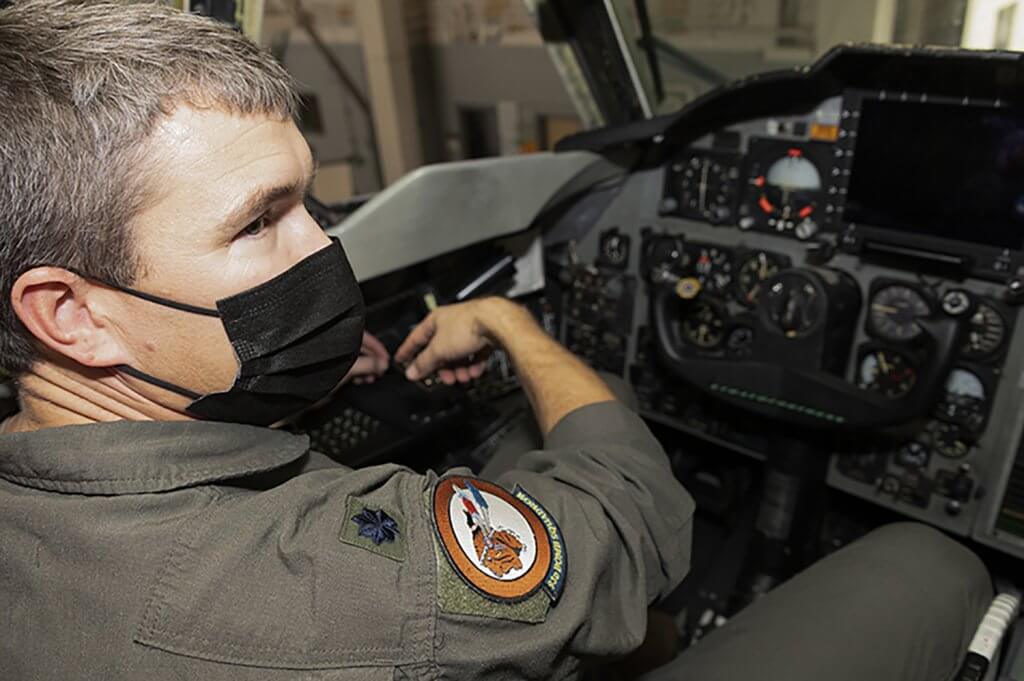Two airmen are spearheading the installation of USB charging ports for B-52 bombers following their success at the 2021 Strike Tank Innovation Rodeo.
Lt. Col. Warren Carroll and Maj. Brandon Wolf, of the 307th Bomb Wing, pitched the idea for the aircraft LED map light prototype, equipped with a USB charging port, winning a “Golden Ticket” worth $15,000 to help bring the innovation to life.
“The need for a combination USB port and map light system is certainly not new,” Carroll said. “The military has been mirroring what’s happening in commercial aviation for years, and we have been transitioning toward an electronic flight bag, or EFB.”
Barksdale Air Force Base held its fourth annual competition in which airmen were given the opportunity to present their ideas to a leadership panel on the hit TV show “Shark Tank” last year.
“Leaders from the base, and the community as well, decided which ideas to support with their innovation funding,” he said.
RELATED: 109th Maintenance Squadron first in Air National Guard to build 3.5 engine
Both Carroll and Wolf are part of LR Werx, the AFWERX spark cell for the 307th Bomb Wing that launched in November 2020 with the goal of encouraging innovation within the unit.
Spearheaded by Wolf, the program was named in honor of the unit’s “Long Ranger” moniker.
Innovating the nation’s oldest bomber
The U.S. Air Force’s B-52, which has been in service since 1955, currently lacks a USB charging port. The proposed map light design will be mounted in a B-52 Stratofortress and not only give pilots the ability to charge electronic flight books while in flight but also upgrade the technology to energy-efficient LED lighting.
Since most tablets have a short battery life lasting just three or four hours, the charging ports will ensure the tablets stay fully functional while carrying information vital to the success of a mission. It will also eliminate the need for potentially dangerous lithium-ion batteries during in-flight missions.
“When flying a worldwide mission in my younger days, we would literally have to take a duffel bag weighing more than 50 pounds crammed full of paper charts, maps and booklets pertaining to every country and every territory we would cross,” Carroll said.
Now Carroll and his crew use an EFB that lets them carry everything for their missions (e.g., in-flight calculations, technical orders, landing data and other pertinent information) on a single electronic tablet.
“We can reference the same duffel bag’s worth of information, plus have a copy for every crewmember,” Carroll said.
Permanent solution to ongoing power problem
Carroll said they had been searching for a solution that would let them use EFBs on longer missions.
“We had a temporary solution that was more of a carry-on kit that we would plug in and use,” he said, “but the need was always there for a more permanent solution to this power problem. A lot of us reserve citizen airmen are also commercial airline pilots who see solutions [in our work there] that would probably work in the military as well.”
PIVOT, a company that creates aviation gear, is creating the prototype, Wolf said.
“A lot of the major airlines use PIVOT casters to suction cup an iPad to the window so they can have it displayed while flying the aircraft,” he said. “This company has brought to market a solution that meets all of our powering requirements and allows us to have map lights at every location where a person is sitting. It puts USB power in a convenient place for all the people in the aircraft to use. The R&D has already been done, but there are some testing requirements that are slightly different for military use.”
The first batch of combination map light/USB charging ports will outfit an aircraft for the 2nd Bomb Wing and for the 343rd Bomb Squadron. Three lights will be mounted in each aircraft at a production cost of around $2,800 apiece, according to Wolf.
Once the devices prove successful, they will be made available to the entire fleet.
“We don’t know for sure when this will happen but, hopefully, it will be this year,” Carroll said. “It’s dependent on the remaining steps in the additional testing and certification process the military requires.”
Specifically, the military will subject the prototype to rigorous testing procedures that simulate a variety of environmental conditions to ensure that it meets U.S. MIL-STD-810 compliance.
Carroll and Wolf said they hope their success with this prototype will show other airmen that their ideas can be turned into reality.
“You can make a difference at whatever level [in which you are serving],” Wolf said.
For more information about the 307th Bomb Wing, visit its website.

